Let’s Filter it Out

This module explores the scarcity of clean water during different severe water crises. It proposes water filtration devices as a solution. Our student engineers will be challenged to create an effective and cost-efficient water filtration device built from household materials. The goal of the filtration device is to reduce the levels of turbidity (cloudiness or haziness of water) while still being affordable and accessible to anyone with scarce resources.
After this module you will be able to:
- Analyze data gathered by organizing and examining the results of the turbidity test into graphs and charts.
- Evaluate the effectiveness of your water filtration device by testing it to find patterns between the type of filter and the turbidity levels of the water.
- Create an effective and cost-efficient water filtration device designed to decrease turbidity levels in water by using the engineering design process.
- Apply your knowledge on filtration systems by explaining how your filtration device can aid in disaster relief efforts.
SCIENCE TEKS
- 8.1 Scientific investigation and reasoning. The student, for at least 40% of instructional time, conducts laboratory and field investigations following safety procedures and environmentally appropriate and ethical practices.
- 8.1(B) Practice appropriate use and conservation of resources, including disposal, reuse, or recycling of materials.
- 8.2(A), (B), (D) Scientific investigation and reasoning. The student uses scientific
practices during laboratory and field investigations. The student is expected to:
- Plan and implement comparative and descriptive investigations by making observations, asking well defined questions, and using appropriate equipment and technology;
- Design and implement experimental investigations by making observations, asking well defined questions, formulating testable hypotheses, and using appropriate equipment and technology;
- Relate the impact of research on scientific thought and society, including the history of science and contributions of scientists as related to the content.
MATH TEKS
- 6.12(D) Summarize categorical data with numerical and graphical summaries, including the mode, the percent of values in each category (relative frequency table), and the percent bar graph, and use these summaries to describe the data distribution.
NGSS Science & Engineering
- Use graphical displays (e.g., maps, charts, graphs, and/or tables) of large data sets to identify temporal and spatial relationships.
- Analyze and interpret data to determine similarities and differences in findings.
- Consider limitations of data analysis (e.g., measurement error), and/or seek to improve precision and accuracy of data with better technological tools and methods (e.g., multiple trials).
Materials
Your filter can be built using common household materials including but not limited to the list presented below which provides some ideas and suggestions for materials that can be used.
- Cotton balls
- Coffee filters
- Rice (uncooked)
- Water bottles (funnels)
- Rubber bands
- Duct tape
- Activated carbon (optional, may be hard to find)
- Gauze
- Paper towels
- Container (for collecting water)
- Contaminants, such as soil and dirt, to create the sample of “dirty” water
- Water without contaminates to use for control water, for comparison purposes
- Sand (if available)
Safety
Please seek adult supervision if any power tools are used during the build process. Use caution during any parts of the process that require cutting of materials or use of any sharp objects. The filtration method used in this activity is a simple demonstration, and the water filtered should not be considered safe for drinking.
Activity
Watch the video below. Please note that in our video Mr. Kozak creates a simple filtration prototype using materials he found at home.
Dig Deeper
Read More
Did you know… Turbidity is a measure of how well light penetrates water. Learn More
Did you know… Water isn’t the only liquid that needs filtration! Check out these seven separations that are changing the world! Be sure to check out our expert Dr. Shaffer to learn more about filtration technology! (Recommended for grade 9 students)
Did you know… NASA’s water filtration technology supports water purification efforts worldwide!
Did you know… Much of the Earth is covered with water; unfortunately only 2.5% of water is fresh. Most of the fresh water we have available is trapped in glaciers (70%), and only six countries have access to fresh water. Choose between an online High School activity or a Middle School level article to see how you can preserve fresh water.
Did you know… You can keep track of the amount of water you use each day (water footprint) by using these measurement tools:
- Personal water use chart
- Tips for measuring water usage
- Calculator to help you determine your water footprint
Watch This
Did you know… The average person on earth uses up to 350 liters of water a day? Check out this video about water recycling on the International Space Station (ISS).
Let’s play! Check out these games about water conservation.
Did you know… A turbidity tube can be used to measure the clarity of water. Learn More
Did you know… Gathering data is very important when we are conducting an experiment. It can help us determine if our approach to a problem is giving us a positive or negative result. To do this, you must first know how to interpret the data that you have, then you must choose the best way to present it. Whether it be a bar graph, scatter plot, line graph, table, etc., you must choose what fits your data best.
Show What You Know
Meet Our Expert
Devin Shaffer, Ph.D., studies materials and processes for water purification and resource recovery. He is part of UH’s Cullen College of Engineering. The goal of his research is to promote resilient communities and ecosystems through treatment processes that both create and recover valuable resources. Dana Reed is a Ph.D. student in Environmental Engineering and a graduate research assistant in Dr. Shaffer’s lab. She studies the role of conservation in integrated water resources management, and she designs and tests new membrane materials for water treatment. Dana worked as a mechanical engineer in the petrochemical industry before initiating her graduate studies in Environmental Engineering at the University of Houston.
Meet The Teachers
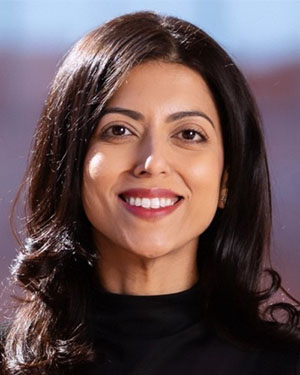
Dr. Mariam Manuel
Executive Director, teachHOUSTON STEM Interactive
Clinical Assistant Professor, teachHOUSTON, Department of Mathematics, University of Houston
Dr. Mariam Manuel is a proud graduate of the University of Houston and was part of
the inaugural class of the teachHOUSTON Program during its inception in 2007. She earned her Ph.D. in STEM Education
through Texas Tech University, and her research interests include STEM teacher education,
engineering design education, and culturally responsive pedagogy. Dr. Manuel also
teaches a course that connects middle school physics content with inquiry-driven instructional
strategies and teaches graduate level coursework in Engineering Design Education,
for the UH STEM Master’s program.
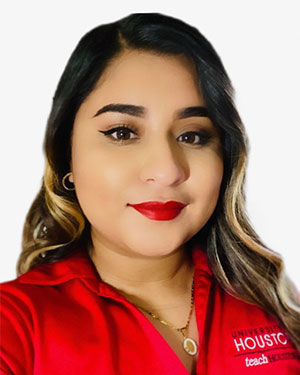
Wendy Argueta
Biology Teacher, Lamar High School, Houston Independent School District
University of Houston, College of Natural Sciences and Mathematics, teachHOUSTON Alumna
Wendy is a certified Biology teacher at Lamar High School. She earned a Bachelor of
Science in Biology from the University of Houston and is a proud teachHOUSTON alumna. She is a recipient of the Noyce Scholarship and presents at national
conferences. She is passionate about bringing equity to her classroom and building
long-lasting relationships with her students. Her lessons incorporate culturally responsive
pedagogy as well as the Engineering Design Process. She is the sponsor of a women’s
empowering club, Girls at Lamar, whose goal is to uplift women and expose young girls
to professional women in the STEM field.
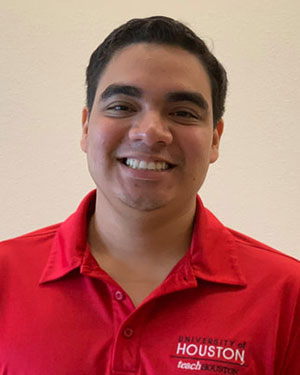
Benito Toscano
Mathematics Major, teachHOUSTON Student Teacher, University of Houston, College of Natural Sciences and Mathematics
Benito is an undergraduate student at the University of Houston. He is majoring in
mathematics, while obtaining his teaching certification through the teachHOUSTON Program. He is a Noyce Scholar and has attended various conferences to learn
more about how to improve his teaching pedagogy. He will student teach next semester
and will be a full-fledged teacher starting in the spring semester of 2021.
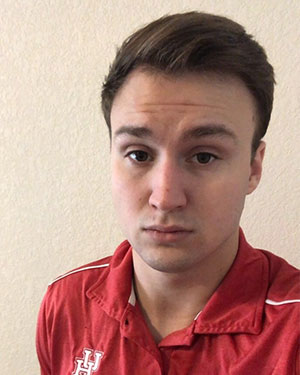
Dalton Kozak
Mathematics Major, Computer Science Minor, teachHOUSTON Preservice Teacher, University of Houston, College of Natural Sciences and
Mathematics
Dalton is an undergraduate student at the University of Houston. He is majoring in
Mathematics and minoring in Physics while obtaining his teaching certification through
the teachHOUSTON Program. Dalton is on the Dean’s Distinguished Scholars List. He also does
research in the mathematics department on Linear Algebra/Matrix Theory Development
in Big Data and Machine Learning. He wants to go to graduate school for Theoretical
Mathematics and get a Ph.D. in order to be a professor at a university. He has a particular
interest in Number Theory and Complex Analysis.
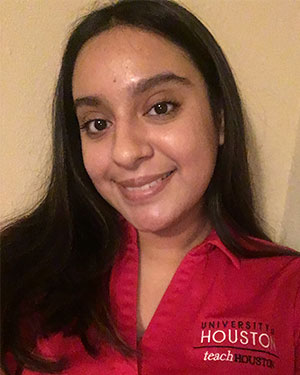
Lizbeth Galindo
Mathematics Major, teachHOUSTON Preservice Teacher, University of Houston, College of Natural Sciences and
Mathematics
Lizbeth is an undergraduate at the University of Houston. She is majoring in Mathematics
and obtaining teacher certification through the teachHOUSTON Program. She wants to attend graduate school and get a Ph.D. in education,
in hopes of becoming an administrator in the future.
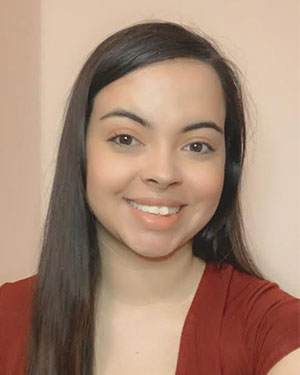
Leslie Trevino
Chemical Engineering Major, Computer Science Minor, teachHOUSTON Preservice Teacher, University of Houston, College of Natural Sciences and
Mathematics
Leslie is an undergraduate student at the University of Houston. She is majoring in
Chemical Engineering with a minor in Computer Science, while obtaining teaching certification
through the teachHOUSTON Program.
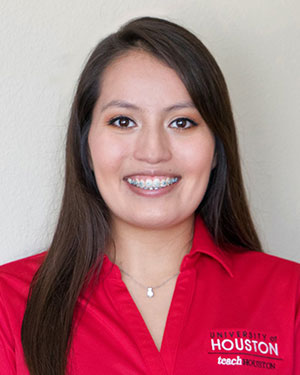
Brenda Chavez
Mathematics Major, teachHOUSTON Preservice Teacher, University of Houston, College of Natural Sciences and
Mathematics
Brenda is an undergraduate student at the University of Houston. She is pursuing a
degree in Mathematics while also obtaining her teaching certification through the
teachHOUSTON Program.
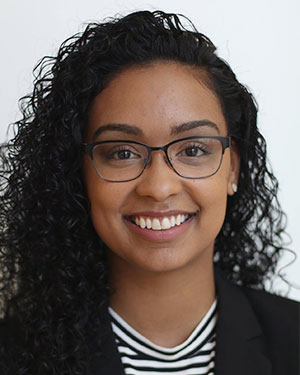
Liandra Larsen
teachHOUSTON STEM Interactive Video Editor
Liandra is a Research Graduate Assistant for the teachHOUSTON Program. Currently, she’s pursuing her Ph.D. in Higher Education Leadership
and Policy Studies at the University of Houston. Her research interests include improving
the university experience for first-generation and transfer students. In her spare
time, she enjoys dancing, binge-watching shows on Netflix, and overspending at Target.
Dig Deeper Sources
- https://kids.kiddle.co/Turbidity
- https://uofh-my.sharepoint.com/:b:/g/personal/pkevans_cougarnet_uh_edu/EQxciQsUV1NMtEAeIh0isbIBfjx_78algPeNOO6VruXliQ?e=Cta9It
- https://authoring.concord.org/sequences/387/sequence_run/c92afb56c3b6cb002a425299e99bdf65bdcc227e
- https://www.amnh.org/explore/ology/earth/ask-a-scientist-about-our-environment/will-earth-run-out-of-water
- https://www.nasa.gov/mission_pages/station/research/benefits/water_purification.html
- https://www.youtube.com/watch?v=rgvysb9emcQ
- https://www.youtube.com/watch?v=0ZKtsUkrgFQ
- https://www.skillsyouneed.com/num/graphs-charts.html
- http://www.ciese.org/curriculum/drainproj/personalwaterusechart/
- http://www.ciese.org/curriculum/drainproj/measure/
- https://www.watercalculator.org/